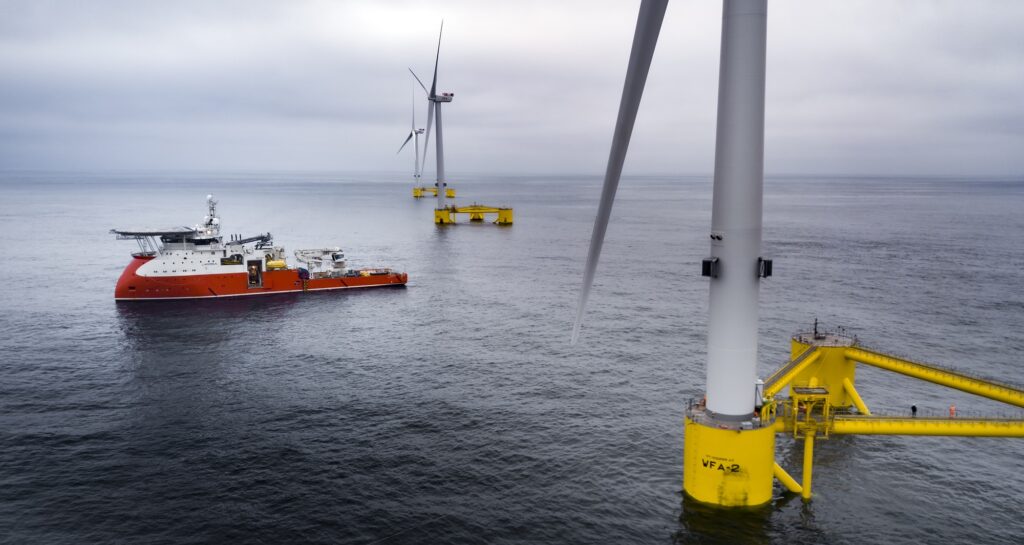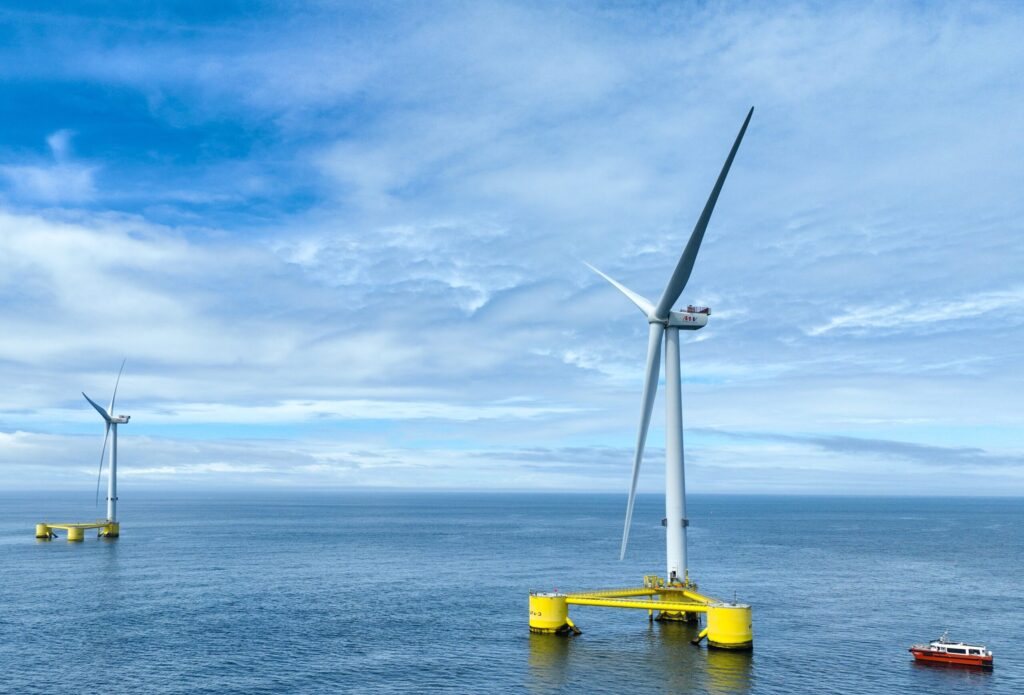By Ralph Torr, Head of Floating Wind at ORE Catapult
Offshore wind power is one of the main renewable energy sources leading the way to net zero. The first offshore wind turbines in the UK were installed about 20 years ago, and the market has grown exponentially since then, with over 10GW of offshore wind now installed.
Until recently, the only way of installing wind turbines offshore was through fixed foundations on the seabed. However, technology never stands still, and the offshore wind sector is no different. Innovation and industry growth have led to a new approaches to deployment offshore wind – erecting the towers onto floating platforms in the water, rather than using fixed foundations. This means the turbines can be positioned in deeper waters with greater wind capacity allowing more renewable energy to be captured.
For the UK to meet net zero by 2050 (and Scotland by 2045), it’s estimated that at least 75GW of offshore wind must be constructed, of which a significant proportion is predicted to come from floating wind. To deliver this capacity, many floating wind project sites need to be developed over the next three decades.
What is floating offshore wind?
A wind turbine is attached to a platform that floats in the water, and this is tethered by mooring lines and anchored to the seabed to keep it in place.
It uses the same technology as fixed wind turbines to generate electricity. Kinetic energy from the wind moves the turbine’s blades, which can convert this power into electricity. The electricity generated is then transmitted onshore using a subsea cable. The main difference is that fixed offshore wind sits on the seabed, whereas floating wind is tethered to the seabed.
Why is floating offshore wind important?
It creates vast opportunity within renewable energy
As floating offshore wind is new and emerging, it’s a fantastic opportunity for research and development in the field, creating new jobs and business prospects specific to the floating wind sector. The UK is surrounded by potential floating wind farm sites, particularly in Scotland and the Celtic Sea, allowing the country to lead the way in innovation and technology development around the industry. Learn more in the Industrial Leadership – The UK Floating Wind Opportunity report.
It opens areas of seabed unsuitable for fixed wind structures
Floating wind structures give developers access to deeper waters, meaning more space to build wind farms, resulting in more renewable energy generation
It’s estimated that around 80 per cent of offshore wind energy resource is deeper than the 60-metre limit of fixed-bottom offshore wind. Floating wind sites can be planned for areas far out at sea with higher winds, making it a more economically viable choice. The potential of floating wind also eases spatial pressures in UK waters and enables projects to be deployed on a much larger scale.
It supports the transition from oil and gas
There are several crossovers between the floating wind and oil and gas sectors, meaning that the transfer of knowledge and technologies can provide a powerful route for the transition. Oil and gas currently employs thousands of people who can transfer their skills to offshore floating wind as the technology and sector advances. Learn more in the Risks to Project Development – People, Skills and Vocations report.
Similarly, the needs of the floating wind industry supply chain are comparable to the oil and gas supply chain, for instance, surrounding the required exporting services. Energy prices paid by offshore oil and gas operations are competitive with floating wind prices, creating opportunities for offshore wind transmission.
What are the challenges?
To speed up the deployment of floating wind to bolster the UK’s decarbonisation efforts, there are some challenges we need to overcome first.
Cost Competitiveness
As a new technology, floating offshore wind is still on a journey to reduce cost and reach commercial scale, but this is happening fast – with large scale floating offshore wind project expected to reach “subsidy free” levels by 2030. The development and delivery of a number of medium-scale projects in the coming years presents an excellent opportunity to optimise technology, scalability, standardisation, and supply chain, enabling larger-scale projects to be delivered from 2030 as the UK’s net zero target of 2050 approaches. Find out more on this in the Floating Offshore Wind: Cost Reduction Pathways to Subsidy Free report.
Ports and Supply Chain Capacity
Floating offshore wind turbines and substructures are huge structures – with substructure measuring up to 80m across and weighing thousands of tonnes each. These structures can be made from either steel or concrete. To produce the volume of substructures required a significant increase in supply chain capability is needed, alongside development of appropriate port infrastructure. The use of modular designs will be key to ensuring the substructures can be manufactured, assembled and installed in a timely fashion.
Innovation
Innovation will play a key role in reducing the cost and risk associated with the design, manufacture, construction and operations and maintenance of floating offshore wind farms. Particular opportunities exist with respect to modular substructure designs, vessels and cranage for project construction, the use of robotic and autonomous systems for operations and maintenance.
The possibility of expanding offshore floating wind farms in deeper waters across the world is exciting, and without it, net zero targets will be hard to meet. To put it simply, if we want to create a more sustainable world powered by renewable energy, floating offshore wind must be part of the solution.
Discover how ORE Catapult’s research helps to support the floating offshore wind sector here.
Photo of the Kincardine Offshore Wind Farm project courtesy of Principle Power.




